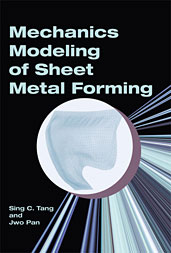Technical Paper
Experimental Modal Methodologies for Quantification of Body/Chassis Response to Brake Torque Variation
2007-05-15
2007-01-2343
Brake torque variation is a source of objectionable NVH body/chassis response. Such input commonly results from brake disk thickness variation. The NVH dynamic characteristics of a vehicle can be assessed and quantified through experimental modal testing for determination of mode resonance frequency, damping property, and shape. Standard full vehicle modal testing typically utilizes a random input excitation into the vehicle frame or underbody structure. An alternative methodology was sought to quantify and predict body/chassis sensitivity to brake torque variation. This paper presents a review of experimental modal test methodologies investigated for the reproduction of vehicle response to brake torque variation in a static laboratory environment. Brake caliper adapter random and sine sweep excitation input as well as body sine sweep excitation in tandem with an intentionally locked brake will be detailed.

